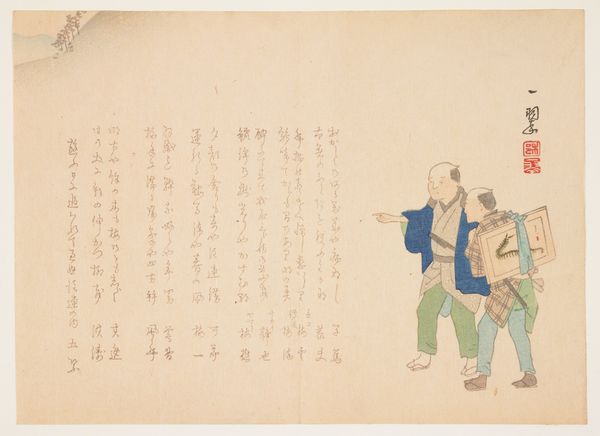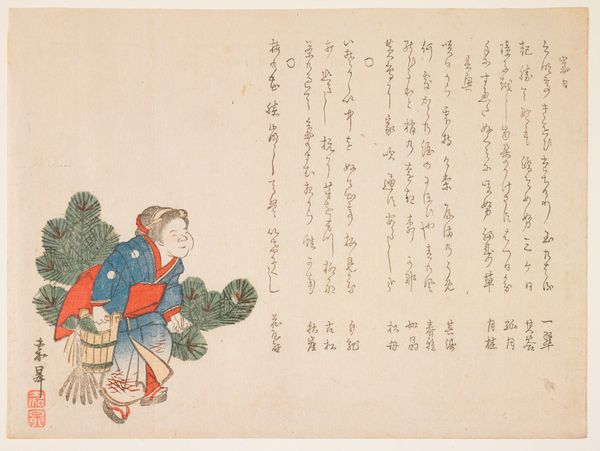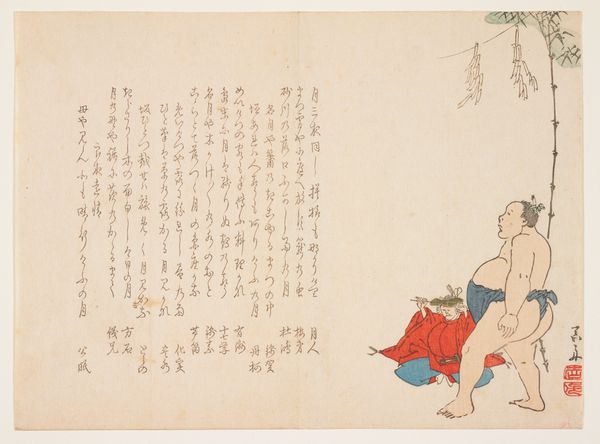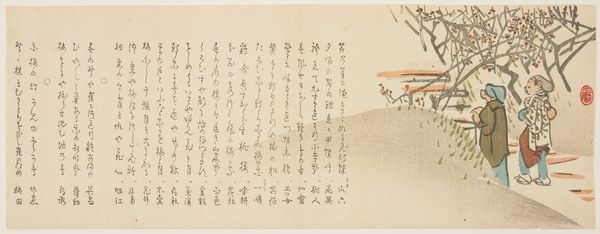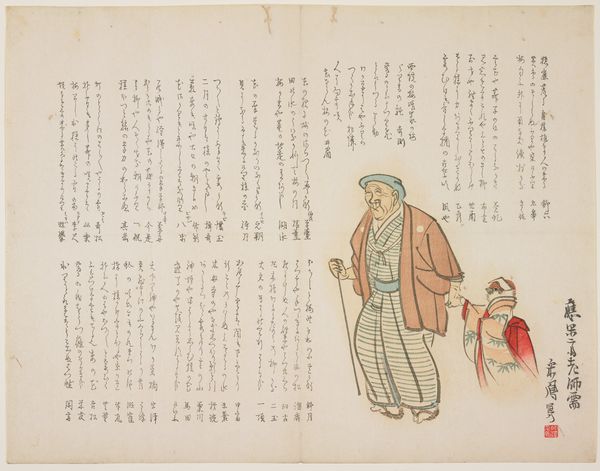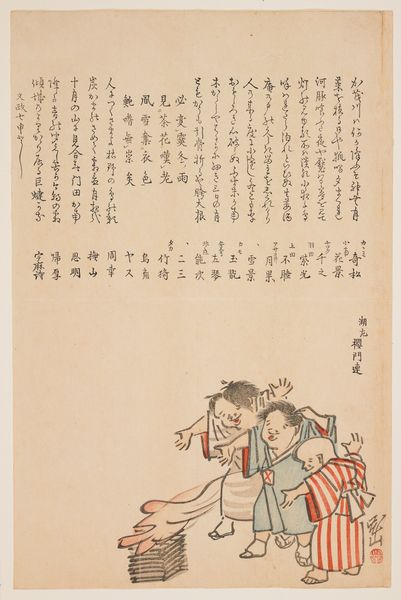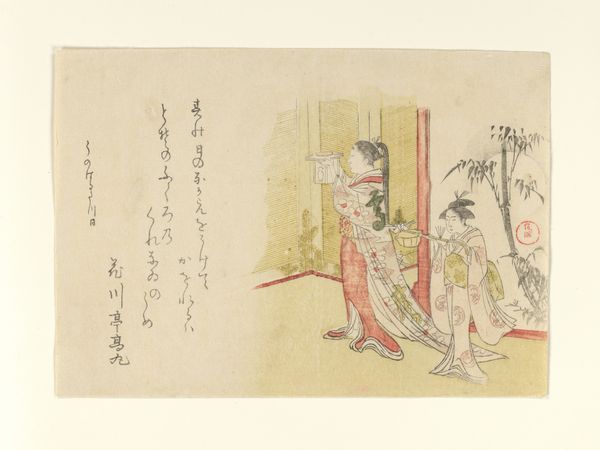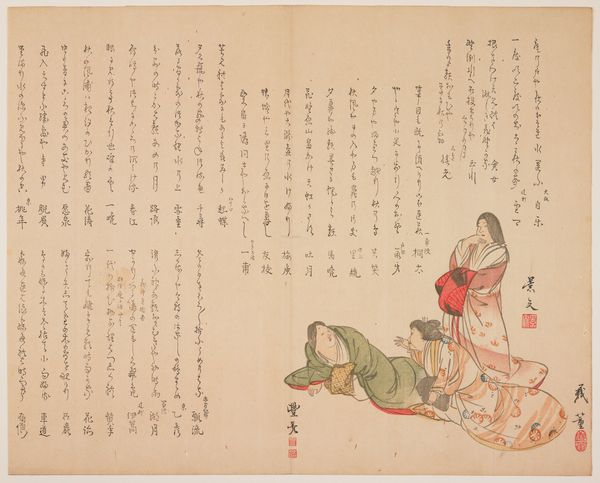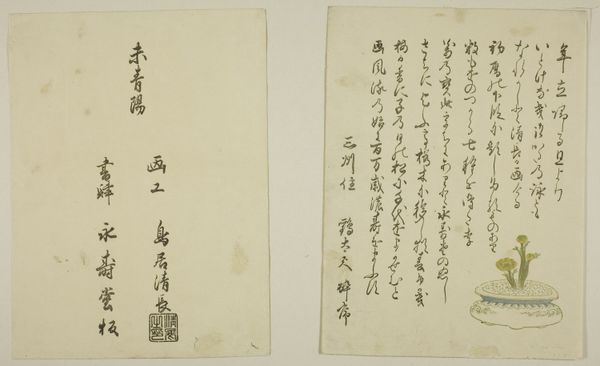
drawing, print, paper, watercolor, ink
#
drawing
#
narrative-art
# print
#
ukiyo-e
#
japan
#
figuration
#
paper
#
personal sketchbook
#
watercolor
#
ink
#
genre-painting
Dimensions: 7 3/8 x 19 1/4 in. (18.7 x 48.9 cm) (image, sheet)
Copyright: Public Domain
This woodblock print, "Puppeteer," by Yano Yachō, made sometime between the late 18th and early 19th century, captures a scene of everyday life. Note the figure of the puppeteer, his box displaying a puppet playing what appears to be a flute, immediately captivating his audience of onlookers. The image of the entertainer with a wind instrument recurs throughout history. Consider Pan, the Greek god of the wild, whose pipes led to ecstatic dance and frenzy. It reappears in medieval jester figures playing pipes or flutes, and the pied piper leading children. Perhaps this common motif hints at something buried deep within the collective unconscious. Is it the hypnotic power of music? The Pied Piper’s tale ends in tragedy, while the puppeteer offers lighthearted entertainment. Yet, both figures remind us of the emotional, primal impact of music and performance. Such scenes engage viewers on a primal level. It is this non-linear and cyclical progression of symbols that resurfaces, evolves, and takes on new meaning throughout history that I find most fascinating.
Comments
minneapolisinstituteofart almost 2 years ago
⋮
During New Year's holiday, itinerant puppeteers performed for delighted crowds of children. The earliest puppeteers were associated with Ebisu shrine in Hyøgo prefecture, causing this style of puppetry to be called Ebisu-mawashi (wanderers from Ebisu). Hiding their hands behind a large rectangular box suspended from their necks, Ebisu-mawashi puppeteers skillfully worked the dolls on the box-top stage. The show always ended with the appearance of a weasel, whose furry fake tail suddenly popped out of the box, playfully startling the children. The little boy dressed in a red kimono in this picture, however, is delighted by this trick and excitedly points at the puppet on the box while his mother looks on.
Join the conversation
Join millions of artists and users on Artera today and experience the ultimate creative platform.
